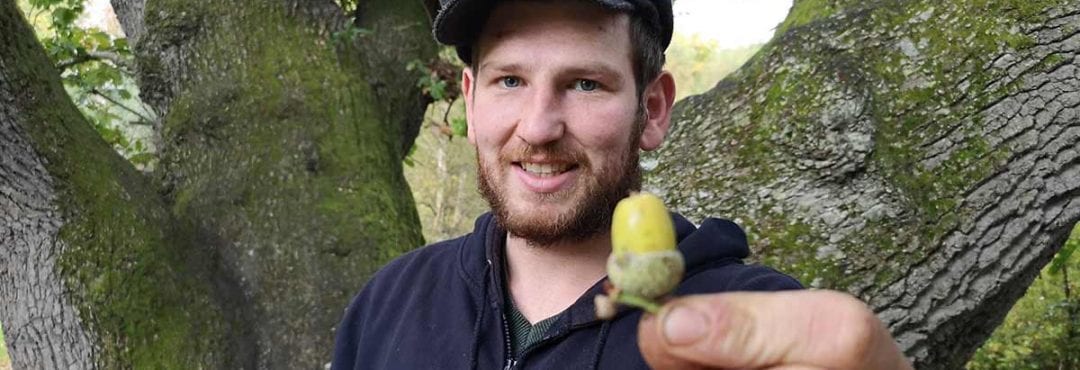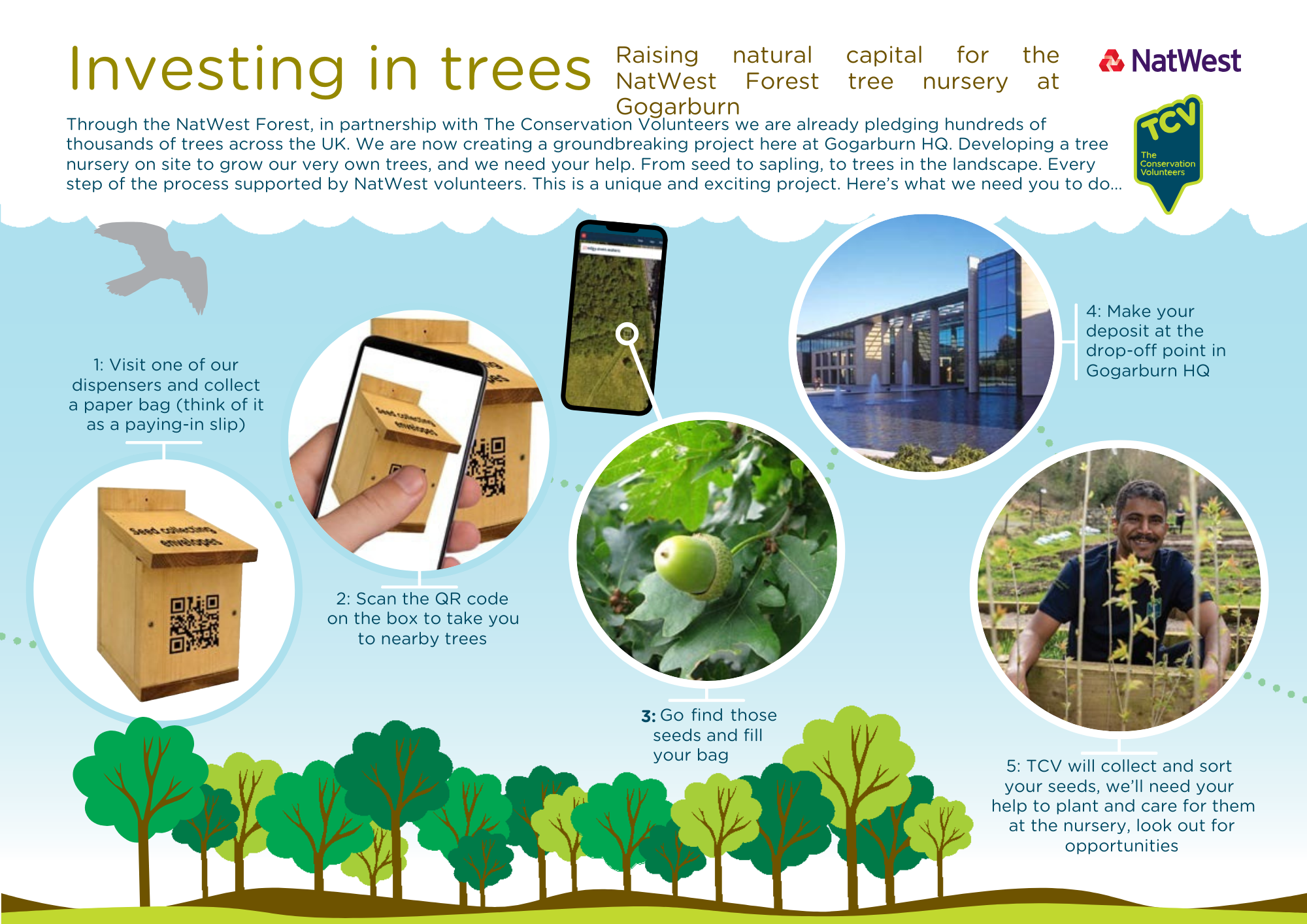
Step 2. Go for a walk
By yourself or with a colleague head out to find your seeds. Check the webpage to see what should be in season. To make our sorting easier, collect one species per envelope.
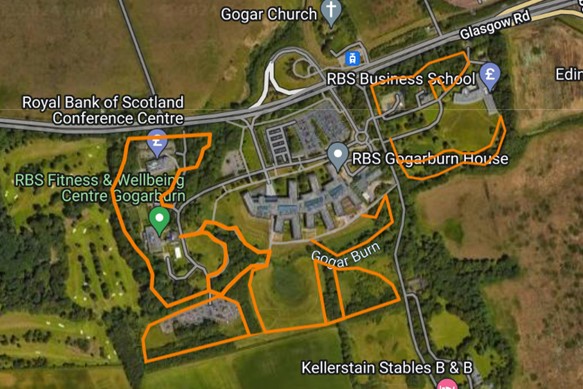
Step 3. Post your findings
Seeds can be dropped off in the green collection box located in The Street.
Step 3. At the tree nursery
Seeds will be taken back to the tree nursey to be processed, grown, and cared for. There are weekly sessions you can take part in, email teri.grieve@tcv.org.uk for more detail on how to volunteer and get involved.
Seed gathering by month
Wych elm (May- June)
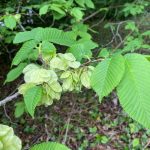
Lime green petal-like seeds appear clustered on branches in April. Once seeds start to turn brown they are ready to collect by pulling the clusters gently from the branches. Wait too long and they’ll be blown away.
Willow sp. (May- June)
A little difficult to collect as they are dispersed by the wind. Willow seeds are light and fluffy some resembling cotton wool or dandelion fluff. Seeds are usually ready by mid-May but as the seeds are so small bring the envelope to the branch to shake/pick/disturb the seeds.
Wild cherry/Gean (June – August)
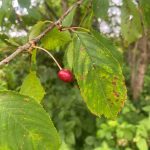
This tree grows in woodlands and is frequently planted in parks, gardens and streets due to its blossoms. Cherries can be collected once the fruit turns yellow-red before they are fully ripened and they typically grow in pairs. Leaves are oval, with fine toothed-edges ending in pointed tips, measuring 6-15cm in length with a red stock. As the fruit changes colour they can be more easily spotted in the green canopy.
Bird cherry (July - August)
Bird cherries can be found growing in clusters and are ready to collect once the flesh turns black. Leaves are oval with fine serrations along the edge.
Birch, Downy (August – September)
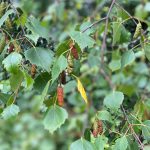
They have small triangular leaves with sharp toothed-edges. The seeds break down from cylindrical structures that have a scaley appearance called strobiles. They can be collected while still green, but ideally when they start turning brown, before the wind takes them. Seeds may separate when picking, keep your envelope as close to the strobile as possible.
Birch, Silver (August – September)
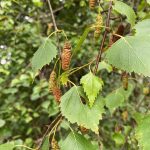
They have small triangular leaves with sharp toothed-edges. The seeds break down from cylindrical structures that have a scaley appearance called strobiles. They can be collected while still green, but ideally when they start turning brown, before the wind takes them. Seeds may separate when picking, keep your envelope as close to the strobile as possible.
Note: Downy and silver birch can look very similar and can often hybridise. Don’t worry about trying to tell them apart, you can store the seeds in the same envelope.
Rowan (August – September)
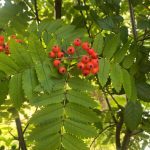
Rowan berries typically ripen in late August, look for the scarlet or deep orange berries that hang in clusters. Ripe berries can be removed in their bunches. Next year's buds will be on the branches so be careful not to damage them.
Alder (September – November)
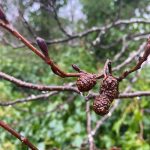
Alder is a deciduous tree (tree that loses its leaves) that produces cones. Their cones can be collected as they start to turn brown, to when they are partly open. If the cones are fully open, look for the orange seeds inside for viability. You may see brittle, dark brown cones from previous seasons, these are empty and can be left.
Elder (September – October)
Once most of the berries turn deep purple they can be collected in clusters by gently separating them from the branch.
Hazel (September – October)
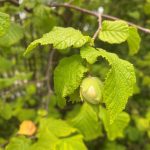
Hazelnuts can be hard to spot as their green husk can blend in with the leaves. Hazelnuts are often collected while they are still green from the tree or from the ground once they fall. Leave any that have been partly nibbled or have obvious holes.
Maple, Field (September – October)
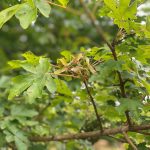
Field maple trees produce winged seeds. A pair of seeds enclosed in a horizontal winged structure. You will be able to see them from April but they will not be ready to collect until September, or risk being under developed. You will find them growing as standalones or in hedgerows.
Oak, Sessile (September – November)
Acorns can be collected from the ground or the tree as they start to turn from green to brown, or easily separated from their woody top. Discard any that have obvious holes.
Oak, English (September – November)
Acorns can be collected from the ground or the tree as they start to turn from green to brown, or easily separated from their woody top. Discard any that have obvious holes.
Blackthorn (September – October)
Caution this tree contains thorns. Blackthorn berries, or slows, can be collected towards the end of September. Gently grasp the branch to separate the dark berries.
Lime, small-leaved (September – October)
Easily confused with lime and large-leaved lime, small-leaved lime have 3-8cm long heart shaped leaves. Seeds are round, small pea-like structures on long stems that can be collected from September.
Yew (September – November)
This evergreen conifer has needle-like leaves growing in rows along its branches. Instead of cones, the seeds of the Yew tree are contained in a red, cup shaped, berry-like structure called an aril.
Scots pine (October)
Not to be confused with lark or other conifers around Gogarburn, Scots pines have twin needles coming from their branches. Cones should be collected when they turn from green to brown. It is best to collect while they are closed or partially open. If a cone is fully open, you should see petal-like structures in the gaps if the seeds are still present.
Hawthorn (October – December)
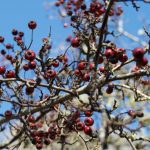
Caution, hawthorn branches have thorns. Carefully remove the small red berries. Hawthorn is often grown in hedgerows but can be found as standards.
Dog rose (October - December)
Seeds are contained in rosehips (hips) that can be collected once fully red. Inside the hips are small hairs that can be used to make itching powder that surround the seeds. The leaves of the dog rose have small spikes with 2-3 pairs of leaves ending in a terminal leaf. The dog rose should not be confused with other roses, particularly the Japanese rose and other garden escapees.
Holly (December – February)
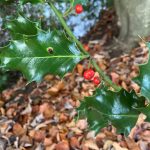
Holly is dioecious so its berries will only be found on the female trees. There are several dotted around the trails of Gogarburn.
Note: If collecting seeds from other locations, landowners permission should be obtained before collecting on private land. Seeds can be collected in the same method with the addition of the first part of the postcode on the envelope.
Leaving seeds for wildlife: We are not aiming to collect every seed from a single tree, rather what is easily accessible within arm’s reach in order to leave plenty for wildlife and promoting healthy genetic diversity by collecting from multiple trees.
Making It Social
Be sure to keep us updated on social media with your seed collecting endeavours! You can find us and tag us in your posts using the following handle: #JoinInFeelGood
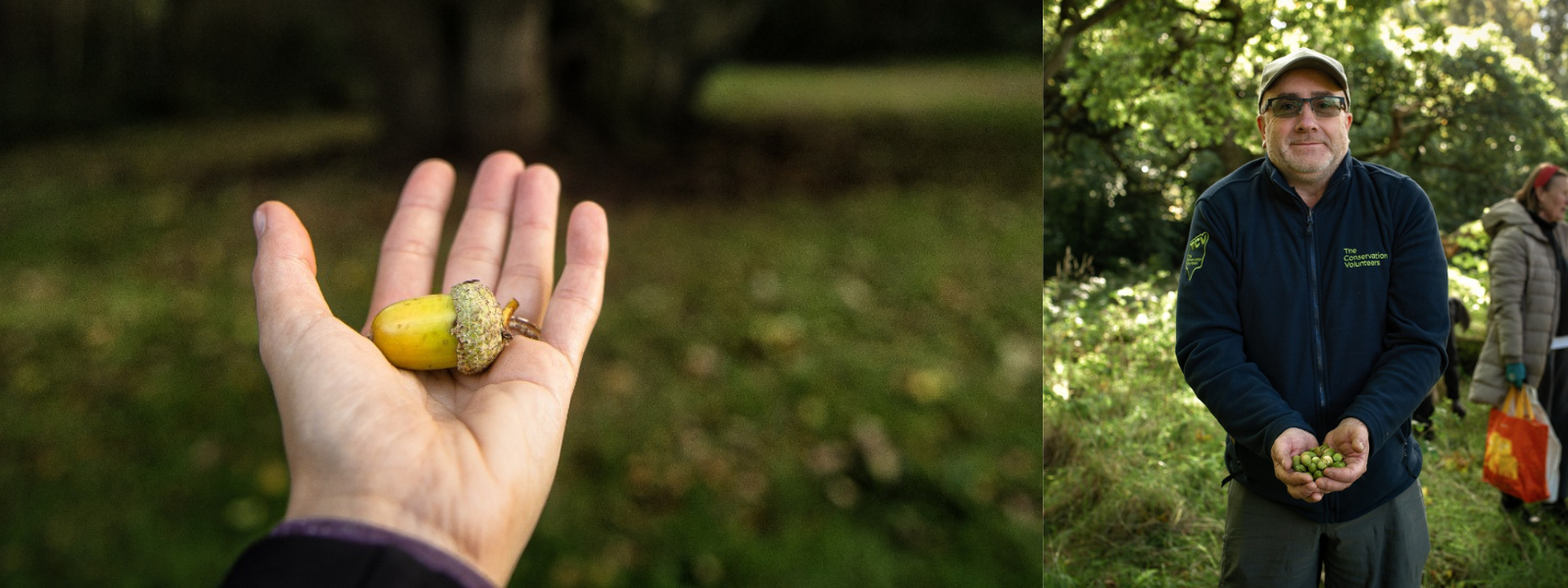
This is just the start of something wonderful, together we will leave a lasting green legacy at Gogarburn HQ – for the air we breathe, for the wildlife within and to take positive, proactive action on climate change.
A huge thanks in advance from us all at The Conservation Volunteers

